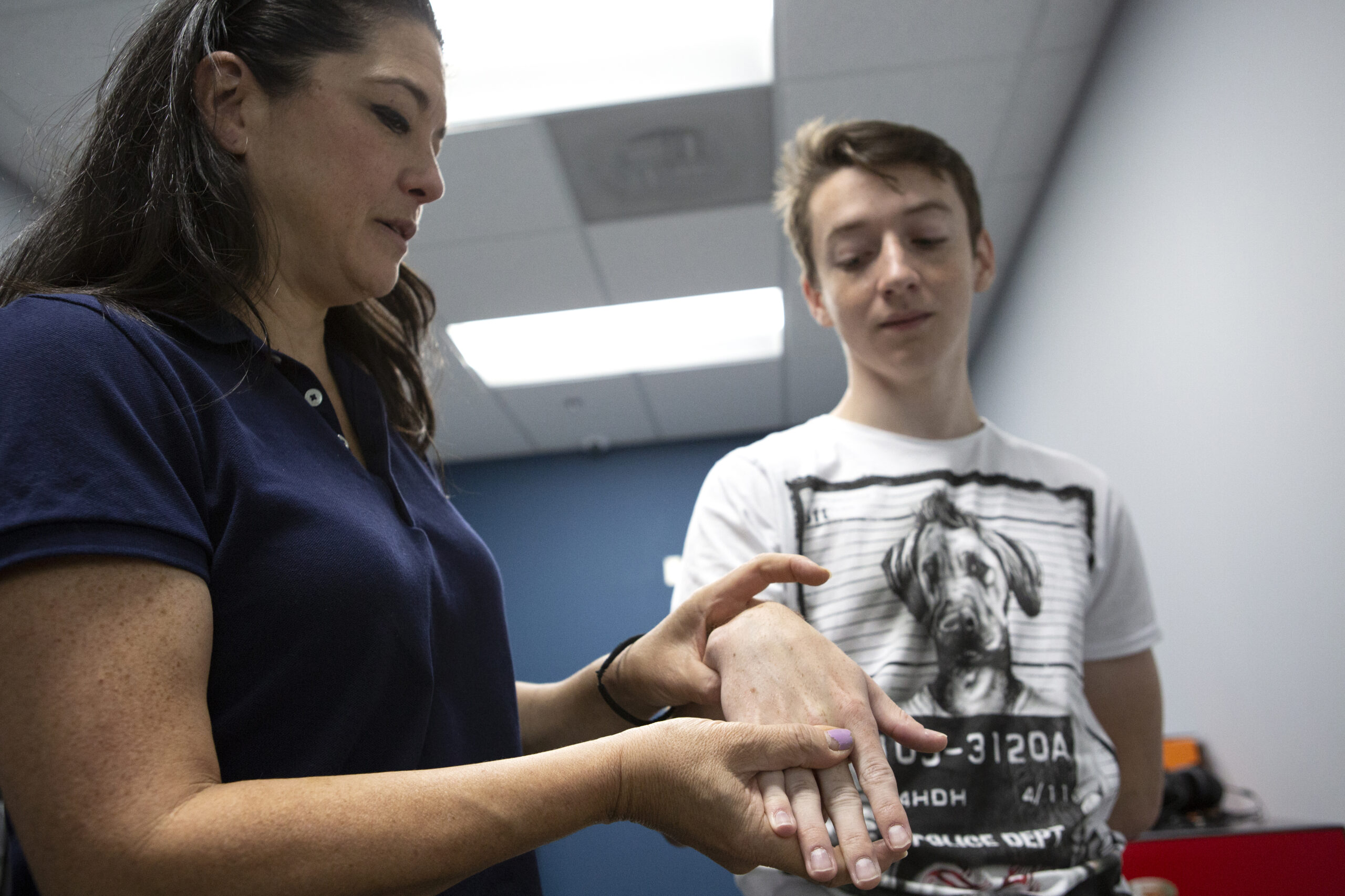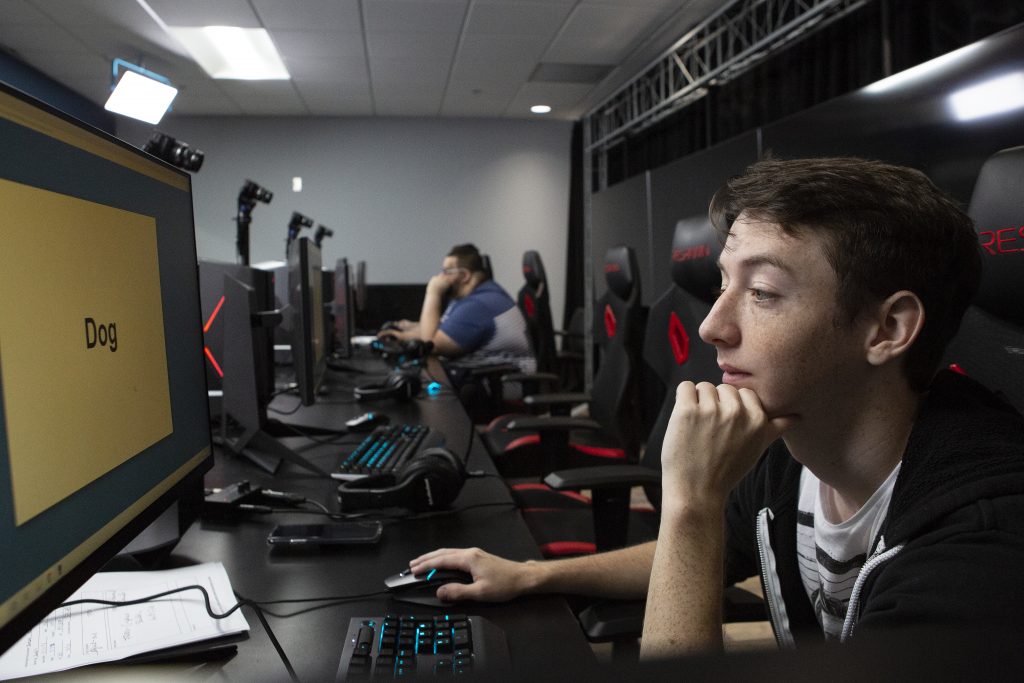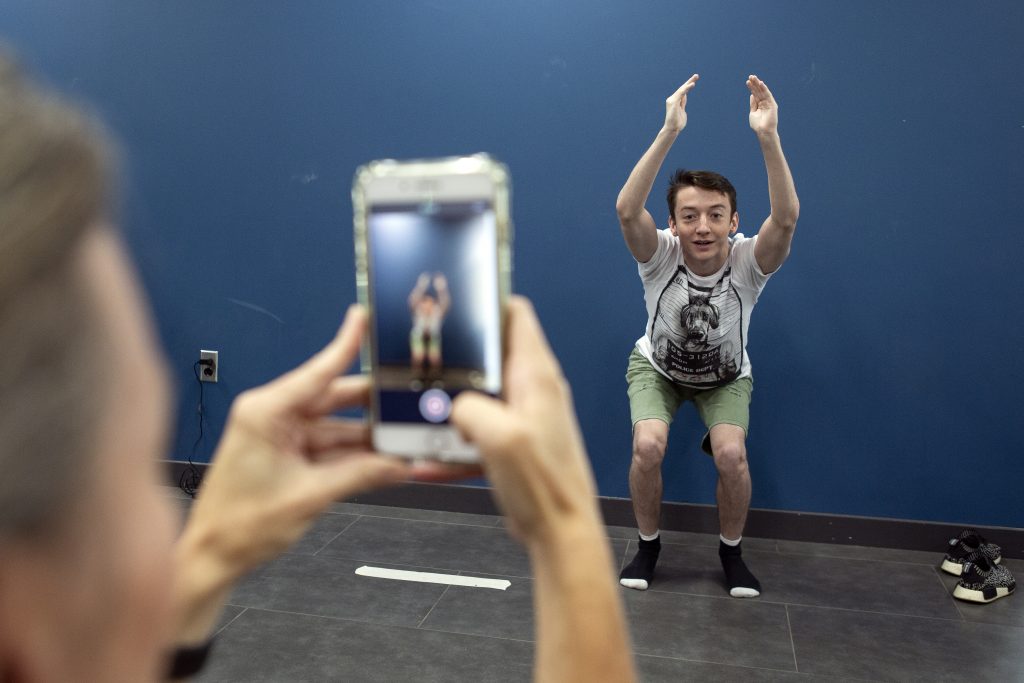Keeping Esports Athletes Healthy Is More Than Just Fun And Games

Dr. Vonda Wright, chief of sports medicine at Northside Hospital in Atlanta, tests esports gamer James Heseltine’s wrist flexibility. She also tested his posture and his neck mobility. Wright has donated time in a partnership with local esports company Skillshot to give gamers more access to medical care.
Evey Wilson / For WABE
Five guys in their early 20s wearing matching jerseys and headsets sit at a row of computers staring hard at their screens, hands a-blazing.
These are the professional athletes in the world of esports.
They say their employer, a company called Obey Alliance, pays them a base salary of $30,000 a year. Some earn a lot more from sponsorships.
They made it to the big leagues playing a game called “Smite.” In it, two teams of mythological creatures face off in magical combat. The matches are live-streamed on the internet, complete with play-by-play commentary.
James Heseltine, one of the members of the team, says it can be mentally and physically challenging to compete at the professional level.
“It is draining,” he said. “Some of the games can go for 60 minutes. It’s terrible if it goes that long.”
Heseltine has been playing professionally for a few years now and hasn’t suffered any major injuries. Still, every now and then, playing leaves him with a sore neck.
“With anything that’s done in excess, you’re seeing overuse injuries: a lot of wrist injuries, a lot of back, neck injuries,” said Joanne Donoghue with the Center for eSports Medicine at the New York Institute of Technology.

She says people who play video games at such high levels can get really hurt.
“A lot of them are not even aware that these are side effects of what they’re doing. It just kind of comes with the territory for them,” she continued.
Team doctors are an important part of any professional athletic organization. They keep players performing their best and help them recover when they get hurt. But the esports industry hasn’t paid much attention to getting its players medical care.
Donoghue says health care professionals need to start paying attention to gamers as pro-gaming grows and as colleges and high schools around the country start their own esports programs.
“We’re going to have to develop new guidelines for this area of competitive gaming, and I think it’s actually going to be a booming field for people in sports that start to take notice,” she said.
Some people are starting to pay attention, such as Dr. Vonda Wright, chief of sports medicine at Northside Hospital in Atlanta.
“This is all part of treating this newest group of professional athletes like we’ve always treated traditional athletes,” she said.
Wright has donated time in a partnership with local esports company Skillshot to give gamers more access to medical care.
Skillshot is like a traditional sports league: It hosts matches that pit independently owned teams against each other.
On a recent Saturday, gamer James Heseltine and others gathered for basic physicals that included range of motion exercises and a vision test.
Wright and her team are getting a chance to do early research on these athletes. She’s trying to figure out what hours of intense gaming does to the human body.
Wright will also build custom workout plans for the players in the Skillshot league to help them head off common injuries.
“Tendon issues, postural issues, low back pain,” Wright said. “What we’re trying to do is not only predict those injuries but prevent them.”
And what’s good for gamers is good for esports, says Todd Harris, who runs Skillshot.

“Thinking about overall player welfare is an important goal for us since, really, they’re the most important entity in the whole ecosystem. It’s all about them,” he said.
Newzoo, which tracks the esports industry, says its audience could top 450 million viewers and its revenues could exceed $1 billion in 2019.
For Heseltine, playing professionally still doesn’t really feel like work.
“Nah, I just feel like I’m hanging out with friends, playing games, which is what I’ve been doing since [I was] a kid,” he said. “I love it, and I hope I can do it for a while.”
Heseltine says if taking better care of his physical health can help him have a longer esports career, he’s game.





